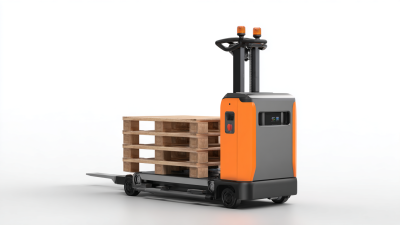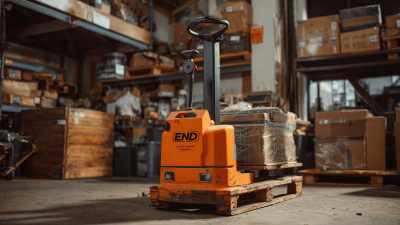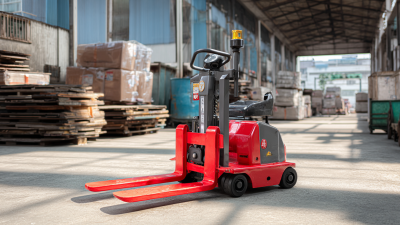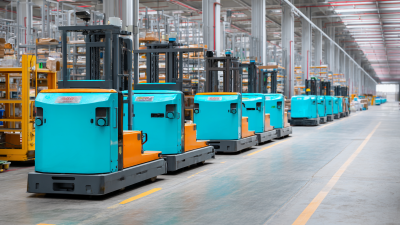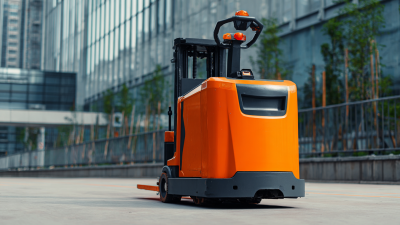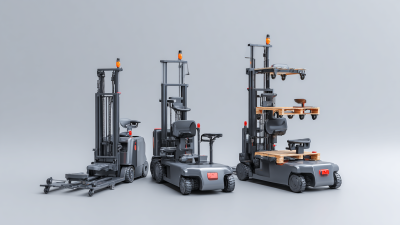Leave Your Message
In the fast-paced world of logistics and warehouse operations, the importance of choosing the right equipment cannot be overstated. An Electric Pallet Jack, a vital tool for material handling, enhances efficiency and reduces the risk of injury in the workplace. According to a report by IBISWorld, the electric pallet jack market is projected to grow at a CAGR of 5.2% over the next five years, reflecting the increasing demand for automated solutions in supply chains. Furthermore, studies show that electric pallet jacks can improve productivity by up to 25%, allowing businesses to streamline their operations while maintaining safety standards. As companies look to optimize their workflows, understanding the various types and specifications of electric pallet jacks becomes essential in making informed decisions that align with their specific operational needs.

When selecting the right electric pallet jack for your business, understanding your specific needs is crucial. Recent industry reports indicate that the electric forklift market is experiencing significant growth, driven primarily by the manufacturing and logistics sectors.
As of 2023, China's electric forklift penetration rate has reached approximately 64%, highlighting the transition towards electric options due to their considerable cost advantages over internal combustion models. This trend shows that electric pallet jacks are not just a choice for sustainability but also for economic efficiency.
Moreover, manufacturers are realizing the importance of innovative solutions tailored to modern logistics demands. Companies are now offering electric pallet jacks at competitive rental prices, such as a 3.0-ton model starting from just 999 yuan per month. Such rental services are designed to accommodate businesses looking to minimize upfront costs while maximizing operational flexibility.

When selecting the right electric pallet jack for your business, understanding key features can significantly impact efficiency and safety. One crucial aspect to consider is the weight capacity. According to a report by the Material Handling Industry of America, an average electric pallet jack can handle loads ranging from 3,000 to 6,000 pounds. Ensure you choose a model that meets or exceeds your intended load requirements to avoid operational issues.
Another important feature is the battery lifespan. Many modern electric pallet jacks come with lithium-ion batteries, known for their longer usage times and shorter charging durations. The Industrial Truck Association indicates that models equipped with these batteries can provide up to 20% more operational hours compared to older models.
Tips: Ensure the electric pallet jack has ergonomically designed controls and handles. This can reduce operator fatigue and improve productivity, especially during extended shifts. Additionally, consider choosing a model with advanced safety features such as automatic braking systems and backup alarms, which can prevent accidents in busy warehouse environments.
When it comes to selecting the right electric pallet jack, understanding the different types available is crucial for optimizing your warehouse operations. Electric pallet jacks can generally be classified into three categories: walk-behind, ride-on, and high-lift pallet jacks. According to a market report by Research and Markets, the electric pallet jack market is projected to reach $4.27 billion by 2026, driven largely by the increasing demand for efficient material handling solutions in various industries.
Walk-behind pallet jacks are ideal for lighter loads and smaller spaces, providing operators with excellent maneuverability. In contrast, ride-on pallet jacks cater to larger loads and longer distances, designed for increased efficiency in larger warehouses. High-lift pallet jacks, on the other hand, offer the advantage of lifting pallets to higher levels, which can significantly improve picking efficiency. Each type serves specific needs, so evaluating your warehouse layout and load requirements is essential.
**Tips:** 1) Assess the maximum weight you regularly handle; this will influence the type of electric pallet jack you should invest in. 2) Consider the operating environment—narrow aisles may require a more compact model. 3) Always check for battery longevity and charging times, as these can significantly impact operational efficiency. By understanding the distinctions and matching them with your business needs, you can streamline your operations effectively.
| Type | Load Capacity (lbs) | Battery Type | Average Lift Height (in) | Turning Radius (in) | Weight (lbs) | Best For |
|---|---|---|---|---|---|---|
| Walkie Electric Pallet Jack | 4,500 | Lead Acid | 7.8 | 56 | 550 | Medium to Heavy Duty Applications |
| Rider Electric Pallet Jack | 5,500 | Lithium Ion | 8.0 | 68 | 800 | Large Warehouse Operations |
| High Lift Electric Pallet Jack | 3,300 | Lead Acid | 31.5 | 60 | 700 | Logistics and Staging |
| Compact Electric Pallet Jack | 2,200 | Lithium Ion | 6.0 | 48 | 400 | Tight Spaces and Small Loads |
When selecting an electric pallet jack, understanding your budget and its long-term cost-effectiveness is crucial. Industry reports indicate that businesses can save up to 30% in operational costs by adopting electric pallet jacks over manual alternatives. This is primarily due to reduced labor costs and enhanced efficiency in material handling.
A study by the Material Handling Industry of America (MHIA) found that companies using electric pallet jacks reported up to a 40% increase in productivity, leading to faster turnaround times and increased throughput.
It's also important to consider the initial investment versus potential savings. On average, electric pallet jacks range from $2,000 to $5,000 depending on their capacity and features. However, with proper maintenance and usage, the return on investment (ROI) can be significant. Reports suggest that for every dollar spent on efficient material handling solutions, businesses can expect a return of between $2 to $4, highlighting the importance of evaluating not only purchase costs but also the efficiencies gained over time. Thus, a thorough analysis of both purchase price and operational benefits is essential for making an informed decision.
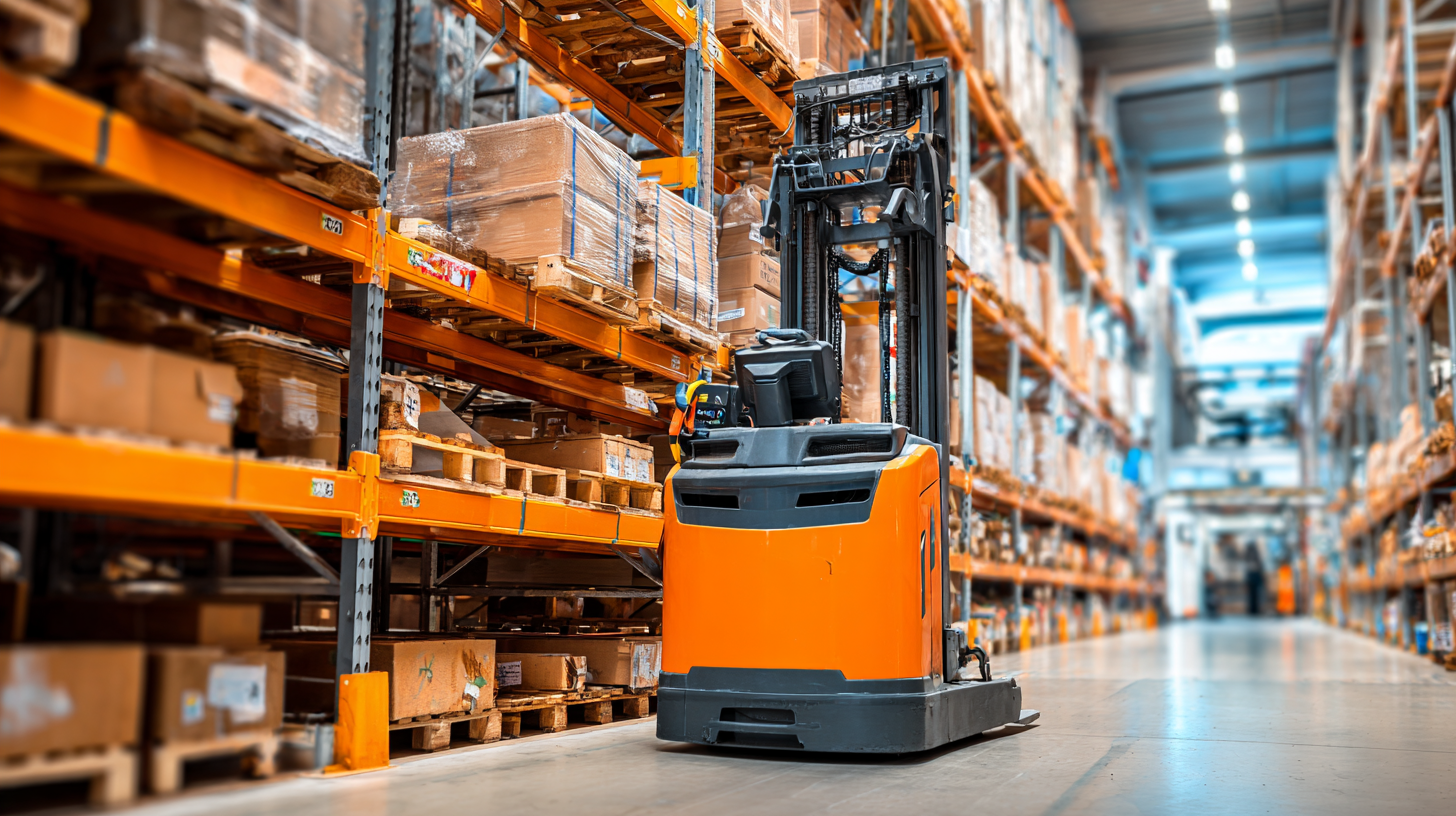
Proper maintenance is crucial for ensuring the longevity of your electric pallet jack, preserving its efficiency and reliability in your daily operations. Start by routinely checking the battery's health, as it is the heart of your pallet jack. Keeping the battery charged and avoiding deep discharges can significantly extend its lifespan. Regularly clean the battery terminals and ensure the connections are secure to prevent power issues. Additionally, inspect the hydraulic system for leaks and maintain proper fluid levels to ensure smooth lifting and lowering operations.
Another key aspect of maintenance involves the wheels and forks of the pallet jack. Regularly examine the wheels for wear and tear, as well as proper alignment. Clean the wheels periodically to remove debris that can hinder movement. Forks should also be inspected for any signs of bending or damage, which can compromise the safety and efficiency of your equipment. By implementing these maintenance practices and addressing any issues as they arise, you can enhance the performance of your electric pallet jack and ensure it serves your business for years to come.
